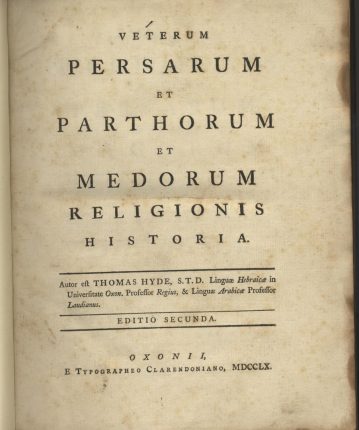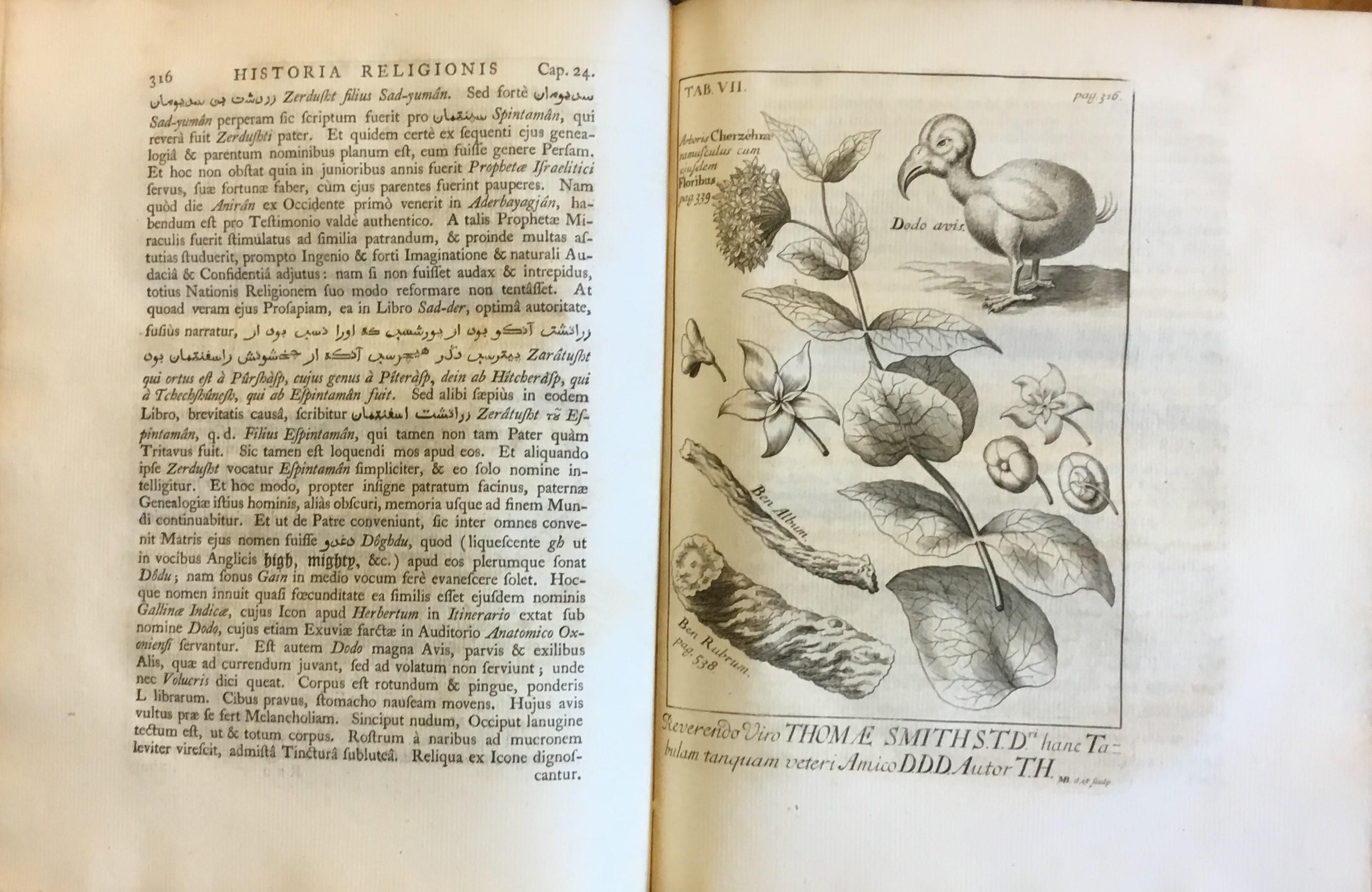Veterum Persarum et Parthorum et Medorum Religionis Historia.
Hyde, Thomas.
Synopsis
Thomas Hyde (1636 – 1703) was an English Orientalist. In 1658 he was appointed reader in Hebrew at Queen’s College, Oxford, and in 1659, in consideration of his erudition in Oriental languages, he was admitted to the degree of M. A. In the same year he was appointed under-keeper of the Bodleian Library. As librarian, Hyde was responsible for the publication of the Catalogus impressorum Librorum Bibliothecae Bodleianae (1674), the third published catalogue of the Bodleian collections.
Hyde, who was one of the first to direct attention to the vast treasures of Oriental antiquity, was an excellent classical scholar, and there was hardly an Eastern language accessible to foreigners with which he was not familiar. He had even acquired Chinese from the Chinese Jesuit Michael Shen Fu-Tsung, while his writings are the best testimony to his mastery of Turkish, Arabic, Syriac, Persian, Hebrew and Malay.
In his chief work, Historia religionis veterum Persarum, he made the first attempt to correct by using Oriental sources the errors of the Greek and Roman historians who had described the religion of the ancient Persians. He identified Zoroaster as a religious reformer, and was the first westerner to make a serious study of the Zoroastrian religion.
The first edition of this work appeared in 1700; it was later republished by Hunt and Costard in 1760 (This edition).
Bibliographic references: Brunet III, 393; DNB X, 402; vgl. Schwab 859 (EA. 1700).








